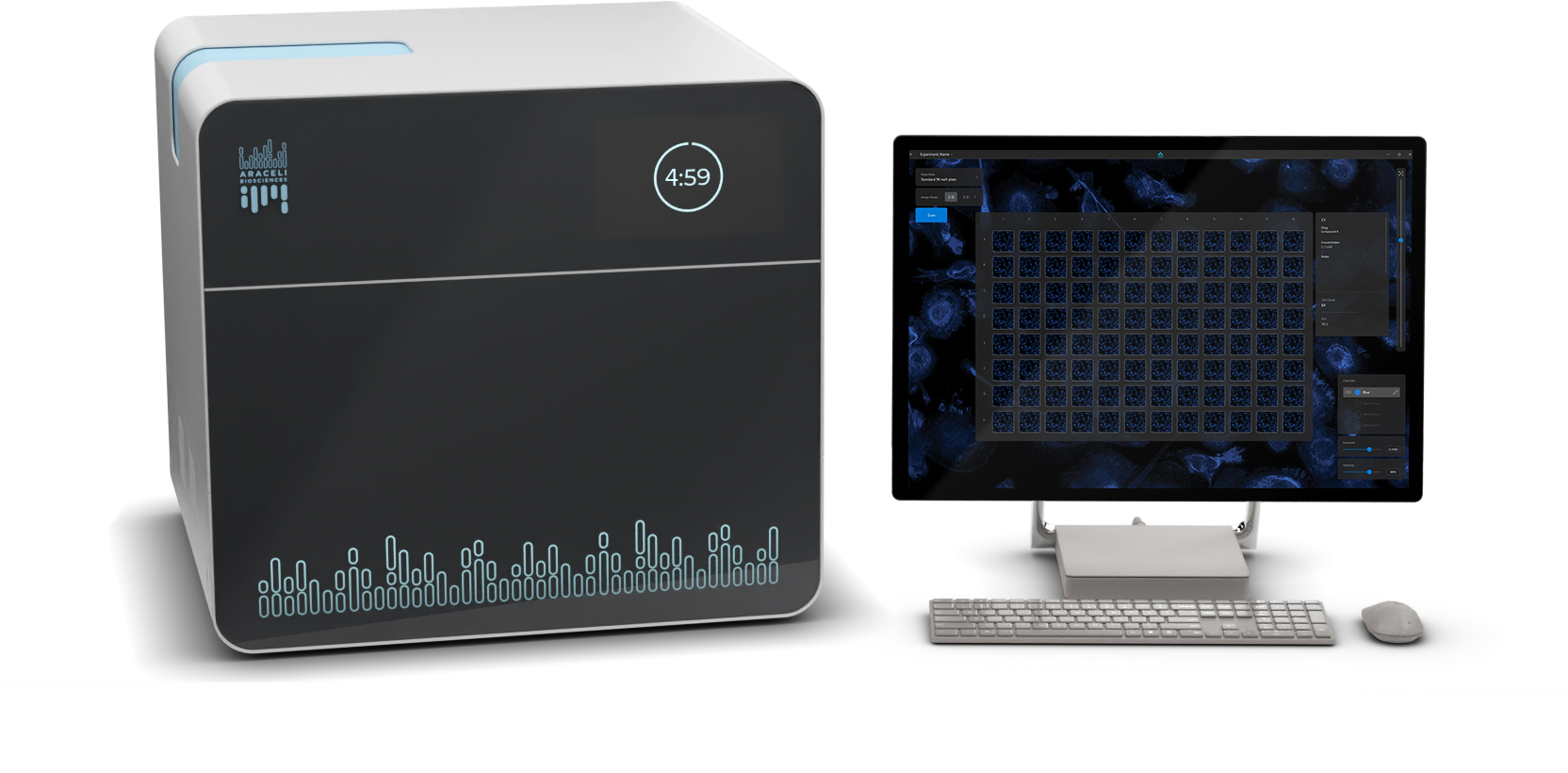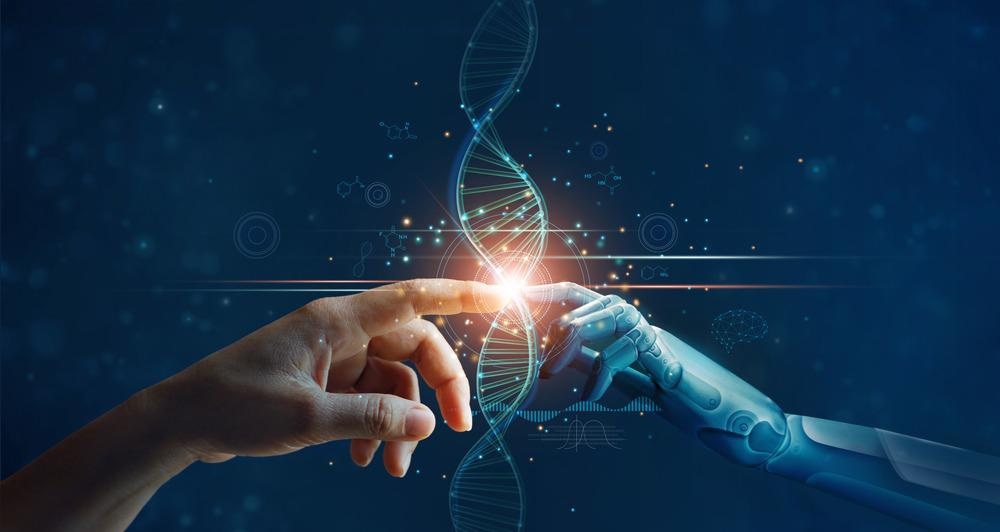In this interview, we speak to Maggie Vantangoli Policelli, head of marketing at Araceli Biosciences, about their latest product the Araceli Endeavor, and how it's revolutionizing the field of high content screening.
Please can you introduce yourself, tell our readers about your role at Araceli, and what inspired you to choose a career in the life sciences?
My name is Maggie Vantangoli Policelli, and my role at Araceli is the Director of Marketing. I started with the company as a Product Manager before moving into this role. I am currently responsible for heading up all of our product development, outbound marketing, applications, and scientific development.
My career in life sciences stemmed from inspiration in middle school. I had a phenomenal science teacher. He made up songs for every topic to make them memorable, and I was excited about going to his class every day.
I think that excitement stayed with me throughout the rest of my training, and I decided to go to school and study biology. I went to graduate school thinking I would like to teach at college. I worked towards this, for a while but soon realized that it was not where I wanted to be. I ended up as an application scientist, traveling the Western part of the US, doing bits of teaching, science, and sales. Eventually, I fell into this role and this field.

Image Credit: Araceli Biosciences
You are currently exhibiting at the SLAS ’22 conference. Can you tell our readers more about what you’re exhibiting there?
We are showcasing our new company Araceli Biosciences and our flagship product, the Araceli Endeavor – a brand new high content screening instrument – and our Voyager software.
These products are designed around changing the high content space from something that can take hours to scan plates to something that we can do in 10 minutes or less for every single cell and every well in multi-well plates.
Our team at Araceli has decades of experience in both high content screening and imaging. The high content screening space has been pretty stagnant, and there just has not been a big revolutionary product in this space so far. The Endeavor is that product.
Why is the Endeavor platform critical for life sciences research?
In my last job, I was a field application scientist. I supported the Western United States and Canada, working with all of the high content analysis platforms in terms of doing the demos, providing after-sales training, and then all of the ongoing customer support for the hardware side, the analysis side, and even some assay setup and downstream analytics that we did not necessarily sell, but I helped with.
I was getting asked the same questions over and over again, prompting me to look at all the platforms I had used over the years for high content analysis and wonder why it is so hard to work with this process and get good quality data. There is such a steep learning curve for all of the different parts of the process – you have to be an expert in image acquisition, an expert image analysis and in data visualization just to be confident in your results.
When we started developing the Endeavor, every single step of the process of building the hardware and the software was based on questions around what we could do differently and whether we should do it differently.
We were very fortunate to start with a team without preconceived notions about high content scanners or imaging platforms. Overall, these advances mean that what we can do on Endeavor in 10 minutes still takes some platforms from 8 up to 46 hours. What Endeavor brings to the industry and what our customers have been so excited about is not just its speed - the system is also straightforward to use.
We have customers that do screening as a service, and they say that most of their employees are not able to work on their own on other platforms for up to a year. An intern who has never done high content screening before can be up and running on Endeavor in less than 30 minutes. This also links back to the question about sustainability because one Endeavor can do what four or more other systems can do in terms of throughput. This means it is not only transformative in terms of its footprint - because lab space is always at a premium - but we are also using fewer electronic components that rely on rare earth elements, and we are minimizing power consumption.
All of this freeing up of capacity means that scientists can get back to doing science, understanding and advancing the literature, and pursing the next significant development.
Araceli Endeavor: A New Generation of High Content Analysis
Due to the ongoing pandemic, many in-person conferences and exhibitions have been put on hold. Why is it essential for researchers, companies, and organizations to collaborate and share ideas and innovations at exhibitions such as SLAS?
In the last two years, everyone has learned how much we like being around people and how this is so critical to our work. Having conversations with people face to face, you come up with ideas that end up being the next groundbreaking technology.
I started working to develop Endeavor literally as the world shut down, and I was remote working and spending this time on Teams with my soon-to-be team, trying to figure out what we were going to build.
The most significant steps for this development happened when I drove down to the office and sat and worked with my team. People are designed to interact with other people, and this is critical for taking huge steps forward.
The COVID-19 pandemic has also highlighted the importance of innovation and collaboration on a global scale. How important is innovation and collaboration to the life science sector, and what are the advantages of researchers and companies working together?
Life sciences as a sector is made up of companies who are doing something really well. These companies meet at conferences and begin to collaborate unexpectedly, leading to massive steps forward.
For example, the history of mRNA vaccines was filled with slow, little steps, building on top of ideas and working together. That is science in general - putting all of these disparate parts together into something. All it takes is one person or one collaboration to turn this industry on its head completely. I hate to use the cliché, but we are all standing on the shoulders of those before us.
The life sciences sector has seen tremendous advancements in recent years and new technology. How has this technology transformed the life sciences sector?
Advances in technology have led us to collaborate across the world through the internet and computing, to the advent of big data. For us at Araceli, the work we are doing with the Endeavor was not physically possible many years ago because the cameras were not available, and no one could handle the amount of data we are currently producing. All other high content platforms were limited by the triangle of compromise – you can acquire data fast, but it wasn’t full coverage or high resolution. You could acquire high resolution images, but you couldn’t do it fast over the whole well. Endeavor has changed that because of the huge advances in computing technology in other sectors.
Technology drives innovation in many ways, and now we are talking about companies, like Recursion, that are generating petabytes of data. That number was not something somebody thought of before, and now they are using that amount of data in drug development.
Technology, in general, has flipped the life sciences industry on its head. I can’t even think about where we are going to be in five years because we’re in such an exponential growth phase as a field.

Image Credit: PopTika/Shutterstock.com
One area of science to see particular growth is the use of artificial intelligence, with more and more companies looking to use AI to streamline their processes and speed up discoveries. Do you believe we’ll see a continued interest in AI in the coming years, and what are your hopes for the future of AI? Are there any particular challenges that need to be overcome before it’s commonly used?
AI is one of those jargon-based terms that everybody gets excited about, but not everybody knows what it means in practice. I think we are going to see continued interest in AI because, especially in the drug discovery space, it is already working. At Araceli, we are utilizing AI-based approaches because we, like many others, have seen massive improvements in image analysis compared to traditional methods. We’ve also been able to harness these approaches in a way that even the most novice user can generate quality results quickly.
There are companies out there putting massive amounts of targets on the map in terms of potential drug candidates, and without those AI-based approaches, it might have taken another 20 years to find them, if we had found them at all.
I think the challenge with AI is the same challenge that you see everywhere else in science; reproducibility. It is about how you control what is going in, what is coming out, and how you know what is coming out can be validated.
Years ago, in my previous job, when we started selling an AI-based software package, people were very standoffish. I think AI is becoming more and more prevalent in our day-to-day lives, and people are becoming more and more comfortable with it. However, we still have to put the controls in place to know that what is coming out is good quality data, especially when it is potentially a drug that can impact human life.
Statistics show that for every person in the world, 270 gigabytes of healthcare and life science data will be created. We are currently seeing more and more companies and researchers adopting AI algorithms and cloud-based technologies to tackle the vast volumes of data produced in research. How beneficial are these tools for research?
I think we are going to see increasing value put on that data. Whether it is images, language data, or biometric data, it is extremely valuable if we know where the data is coming from and it is well annotated.
Being able to handle that data, store it, look at it and analyze it, is critical. I think we are seeing significant advances in technology that will make this data more accessible. That is the focus of what we at Araceli bring to the space. We can acquire large amounts of images, but we have to know what to do with them and move them from the system into other spaces where people can work with them.
We think we have the solution with our platform for high content imaging, but it’s not just high content or even life sciences - everywhere has the same problem.
As technology continues to advance, do you expect to see more and more breakthrough discoveries? Are there any specific sectors within life sciences that people should be paying particular attention to?
I think breakthroughs are going to keep happening. I believe as we come out of COVID-19 and begin to better understand the value of human interaction and its importance to innovation, we will see massive breakthroughs.
We have already seen, with the Pfizer BioNTech and Moderna vaccines, just how fast these breakthroughs can come together. I think we will see a real acceleration of drug development and therapeutic development over the next several years. This pairs well with advances in big data. We are producing more data than ever before. If we can harness this alongside these collaborative efforts, we will be able to accelerate drug discovery pipelines.
COP26 called attention to the importance of sustainability at every level, including science. Why is it important to adopt sustainable practices? And what are you doing as a company to help improve your carbon footprint?
As a company, we started in the middle of the COVID-19 pandemic, so we were forced into a virtual environment with reduced commuting from the offset.
We made the conscious decision to focus on doing virtual demos as shipping instruments and moving people unnecessarily around is terrible for the environment, for example, when driving a truck 1,000 miles to send an instrument for a two-day demo. We have flipped this process, and instead, we have people sending us samples to analyze, reducing our carbon footprint significantly.
As a society, especially in the US, we need to do a lot more, a lot faster, regarding greenhouse gases. This may mean forcing companies to make changes and do what is right for the environment, not just what is right for their profits.
I was trained as a toxicologist, and in Europe, a lot of animal testing is now prohibited on personal care products. People do not put a lot of thought into how much greenhouse gas that process produces. Moving to a more sustainable pipeline like a cell culture environment or in vitro environment can make a big difference in sustainability. There are so many opportunities to change and stop this.

Image Credit: Romolo Tavani/Shutterstock.com
What does the future of life sciences like to you?
I think we will see continued acceleration across the board and developments that will be blockbusters and game-changers. Big data will have a significant impact, increasing virtual and in-person interaction. I also hope to see even more collaboration across the sector.
I think we will continue to see large companies collaborating – instead of trying to form a department for everything within one company, I think we will see increasing collaboration between experts across different organizations.
Where can readers find more information?
About Maggie Vantangoli Policelli
Dr. Maggie Vantangoli Policelli is an experienced research scientist with a background in toxicology and fluorescent imaging. She earned her PhD from Brown University, developing and validating 3D culture models for phenotypic toxicity testing of endocrine disrupting compounds. Following completion of her PhD, Dr. Vantangoli Policelli moved into industry, supporting scientists across North America in the areas of fluorescent microscopy and high content analysis, particularly in the area of drug discovery and development.
At Araceli Biosciences, she is driving the development and commercialization of new technologies to revolutionize drug discovery. Outside of work, she can be found spending time with her family, hiking, and running her cut flower farm.